Going Beyond The Stage
Posted on November 7, 2017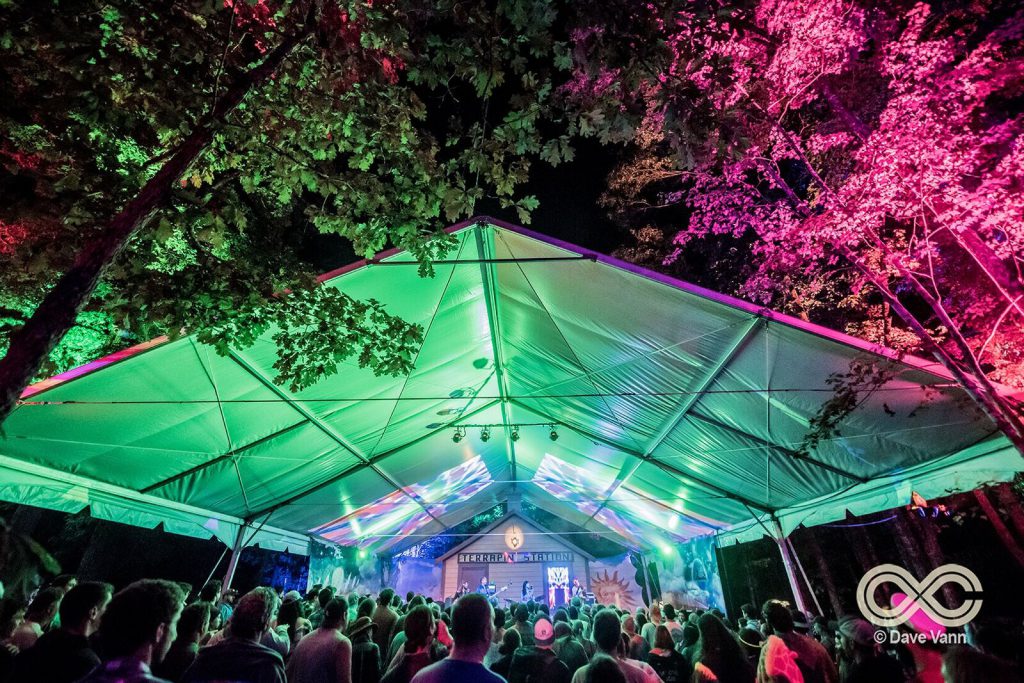
Photo: Dave Vann
Designers often talk about creating an “immersive environment” with their on-stage light show. S Jeremy Peters of SJP Productions takes this a step further by routinely extending his designs to off-stage elements. Nothing outside the stage is beyond the scope of Peters’ creative eye. He’s made trees at festivals sway with moving colors, accented architectural flourishes at concert halls with beams of light and even projection mapped massive sound panels to bring them into his multi-faceted designs.
Lighting the site as well as the stage broadens the designer’s color canvas, believes Peters, providing more ways to engage audiences. We saw firsthand the kind of enveloping magic that his off-stage designs can create when we saw his work at the recent Lockin’ Festival. Intrigued, we asked him to share some insights with us about extending lighting beyond the stage.
When you’re working an outdoor festival do you always try to light the area around the stage? If your client hasn’t specified this kind of lighting do you try to convince them to do it?
“Wherever there are trees, I always propose lighting them up! Currently, my passion lies more in site lighting than stage lighting so I wouldn’t say that I am hyper focused on the stage as an area to light, but look more at the landscape of the entire site to see what makes sense.”
So, what makes sense? What kinds of off-stage elements do you enjoy lighting?
“Obviously, if there is a good tree line behind the stage, this is always one of the first things I propose to light. It is a great backdrop for stage and crowd shots, and really helps to create more visual space on the concert field when the sun goes down. It may seem like a no brainer to light the trees around the stage if there are any, but it’s actually a difficult call for a promoter to make.
“Logistically, though this is an easy thing to do – power is usually ample by the stage, and the backstage area is more secure and off limits to the public. But there is always the possibility of the LD for one of the bands arriving and asking you to turn off the lights. Because site lighting is thought of in a different category as stage lighting, this nuance can often get overlooked when it isn’t communicated to all parties involved.”
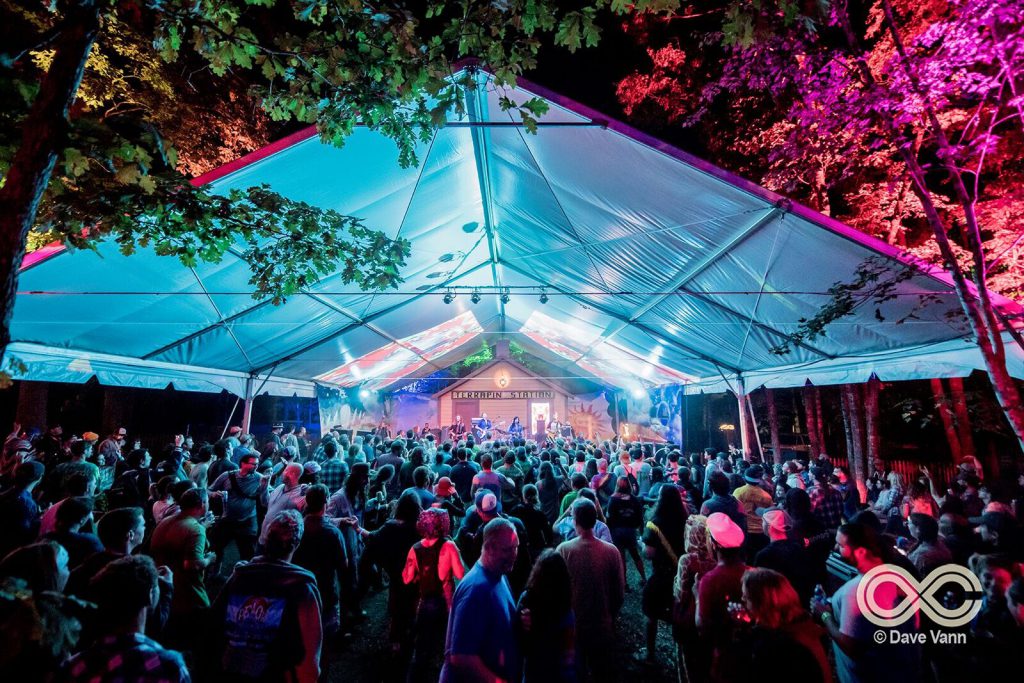
Photo: Dave Vann
Going beyond trees, what other off-stage elements do you like to light?
“If the stage is inside and there are any nice architectural features, such as columns, nooks or arches, I would definitely light these up. Even just a nook or a corner or a wall will do if I’m wanting to create a more immersive light show. In the right room, I love to projection map the walls for a surround visual experience. I have done this several times at the Stafford Palace Theatre in Stafford Springs, CT, as well as inside the main auditorium at Kerhonkson Valley Resort and Spa for a festival called Rock N Roll Resort, which has these great big sound panels all around the room. We projection mapped these panels for a fully immersive light show.
“At outdoor shows and festivals, there can sometimes be art or sculptures installed around the stage, which should certainly be highlighted. Also, typical for outdoor stages and festivals are tapestries framing either side of the stage that often go ignored by LDs. You can create some cool and dynamic movement on still art when you wash it with color changing light because of how the colors play off each other. Often, there is a huge tapestry backdrop as well, and it’s often branded for the event, but they are basically invisible by the time the headliner takes the stage, which I think is a waste.”
What about lighting stage curtains? What are your thoughts on lighting them?
“For me, I consider this a great big space to hold color – a giant canvas – so I like to uplight any curtains or walls behind the band to create a solid backdrop of color. This is an easy way to create a big effect with a small amount of basic lighting. Taking this another step with an old theater trick, sometimes I like to add to the backdrop with crinkled metal mesh, and add both uplighting and downlighting which allows me to create horizontal and vertical color gradients. The texture of the mesh and the shadows and light spots created by crinkling the material creates a mesmerizing look.”
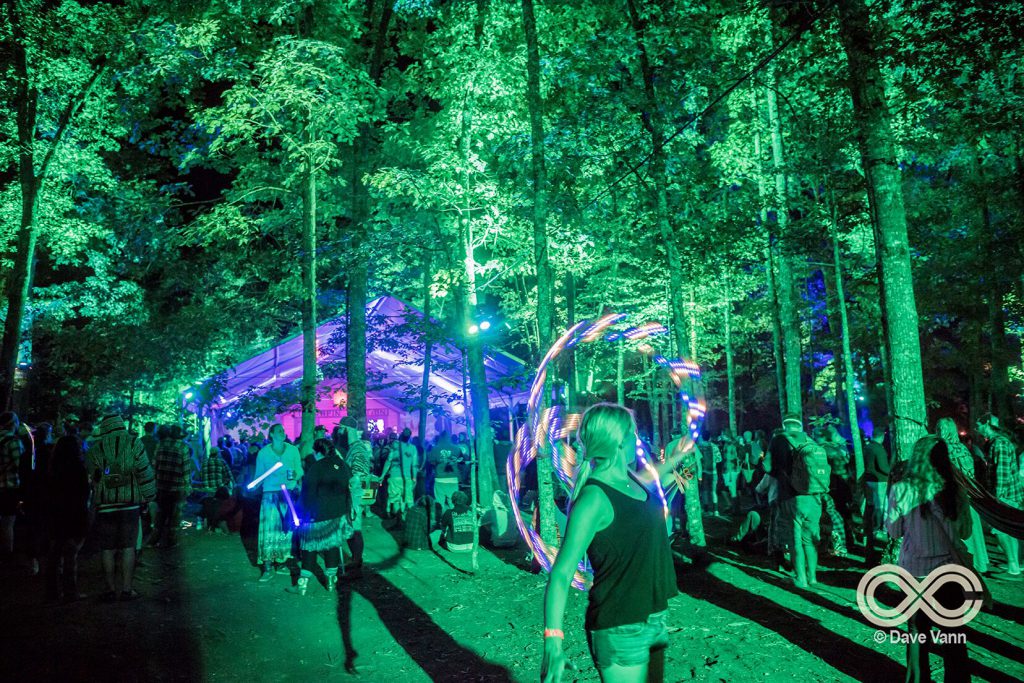
Photo: Dave Vann
Do you coordinate off stage and stage lighting?
“It depends. When I am not the LD at the stage and we do provide tree lighting around the stage area, I leave the lights on a color scroll and I do not coordinate the scenes with the music so it is more in the background, because I do not want to take away from the LD’s show. LDs can, rightfully, feel disrespected if someone is running a show at the same time as them in the same visual space, so I would never do this unless the LD wanted it.
“On the other hand, if I am doing stage lighting, and the stage backs on to a nice tree line, I will go ahead and add lights to the tree line and use them as part of my show… regardless of what the client has specified.”
Do you ever light off-stage elements in white, or is it always color?
“With site lighting, we use white light primarily for functionality and visibility – in vendor tents; as a legal requirement when serving alcohol. We also use white light to make vendor food look appetizing. Other than that, though, I use white light only as an accent for ambient and décor lighting.
“In fact, we like to find ways to incorporate color even into functional lighting. For example, we offer colored high temperature gels for four banger light towers which do wonders to take the edge off of these monsters. I also have plans to retrofit lighting towers with programmable, IP65 LED fixtures, complete with their own power. White is a great and practical color, but as a color of light, it merely allows the objects true color to show. It can enhance a mood already inherent in a space – more regal or formal spaces for example – but it does little on its own to create or set a mood. In natural, every day settings, I think it’s important to create a special environment for event goers, which colored lighting can do more effectively than white lighting.”
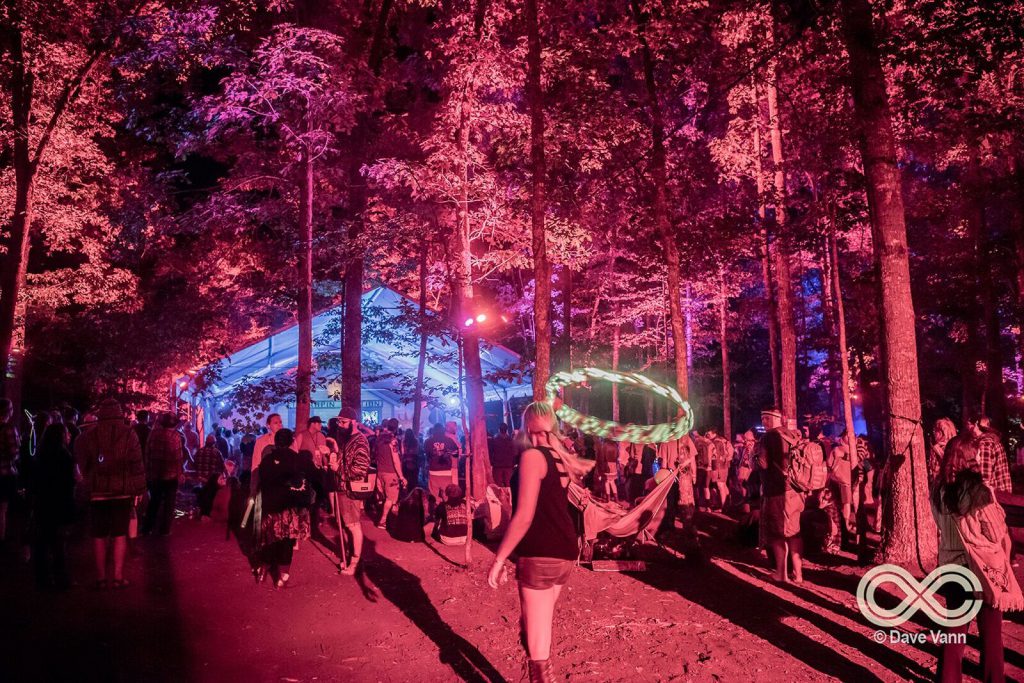
Photo: Dave Vann
Back to lighting trees — when you use color do you try to select hues that look natural, like green for trees?
“I like for the tree lighting to make the trees stand out in a way that is very different from the day time. In the dark, you don’t typically see trees. So, if you see trees at night at an event and they’re lit in white or typical ‘tree colors,’ you might overlook that something special has been done to them to enhance your nighttime experience. This is why I stay away from natural colors like white and green and lean towards colors that people don’t expect. Color changing effects also react with the color of the leaves to create movement as if the trees are pulsing, which can mesmerize viewers. I find people are affected by tree lighting more strongly than they are when they see lighting on manufactured scenic elements, perhaps because they are seeing nature in a different light.”
Are there safety concerns when you hang lights off stage?
“A stage is made up of rigging points, but these structures are not available for most off-stage elements. Most of time, we are limited to installing lights on the ground. With ground installations, the safety concern is more typically a minor tripping hazard rather than heavy equipment falling on people. And typically these areas have less traffic, so I would say the safety concern is minimized with most site lighting installations. But you have to be flexible and really consider the environment and all its different uses. You can run cables in the air between trees, well above people’s reach, but is there any truck traffic coming through? If there is pedestrian traffic, will cable ramps suit the vibe? Is trenching cables possible? Is there any concern about theft? Are there any competing light sources such as light towers going up nearby? There are lots of logistic considerations when you light off stage.”
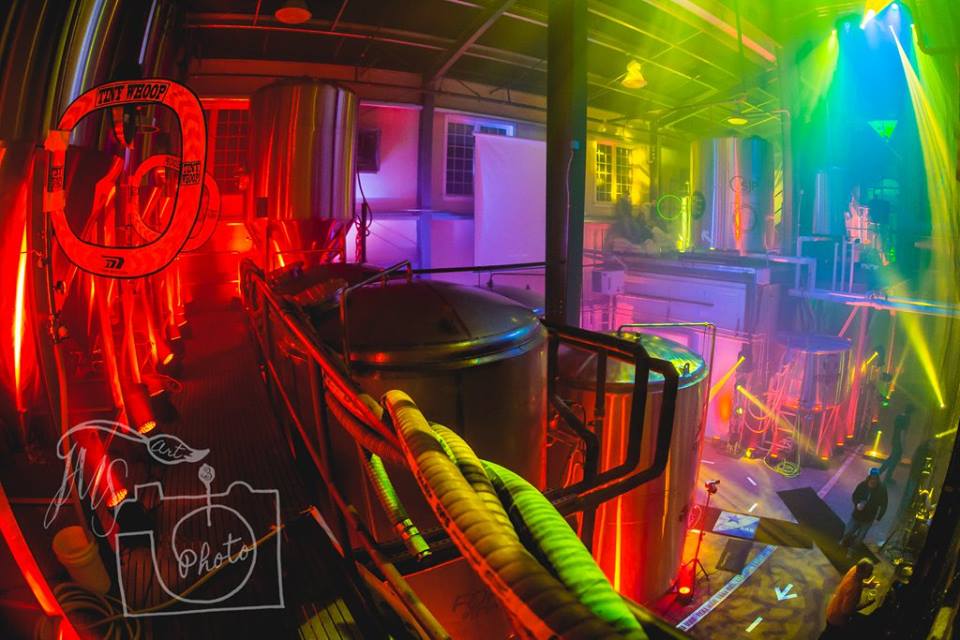
How do you decide when to downlight vs. uplight an off stage scenic element?
“The decision to uplight or downlight an element is also limited by what is available in the environment. Installing lights on the ground is often the only option, so uplighting is more typically used. Also, downlighting can be blinding if you are not being mindful about where you place and focus the lights. When downlighting, I tend to focus the lights straight down or in the direction that people are walking, so they are not facing the light and being blinded by it.”
What is the most common mistake made when lighting off stage elements?
“I’d say the most common mistake is that these elements are ignored entirely. Typically we think of the stage and the site as two very distinct and separate entities. You have your stage crews and you have your site crews and they have very different personalities and are focused on entirely different elements. I came into site lighting with a stage lighting background, and perhaps this is why I envision moving heads on a pedestrian walkway, like we have done at Peach and Bisco in previous years. As I spent more time focused on site lighting, it became natural for me to see the site as a way to expand on the stage experience and fill the viewer’s peripheral. That we tend to treat the stage and the site so distinctly, I think, causes people to focus too narrowly, so that they don’t notice these atypical lighting opportunities. I am always looking outside the box, for custom solutions that make sense in each particular setting.”